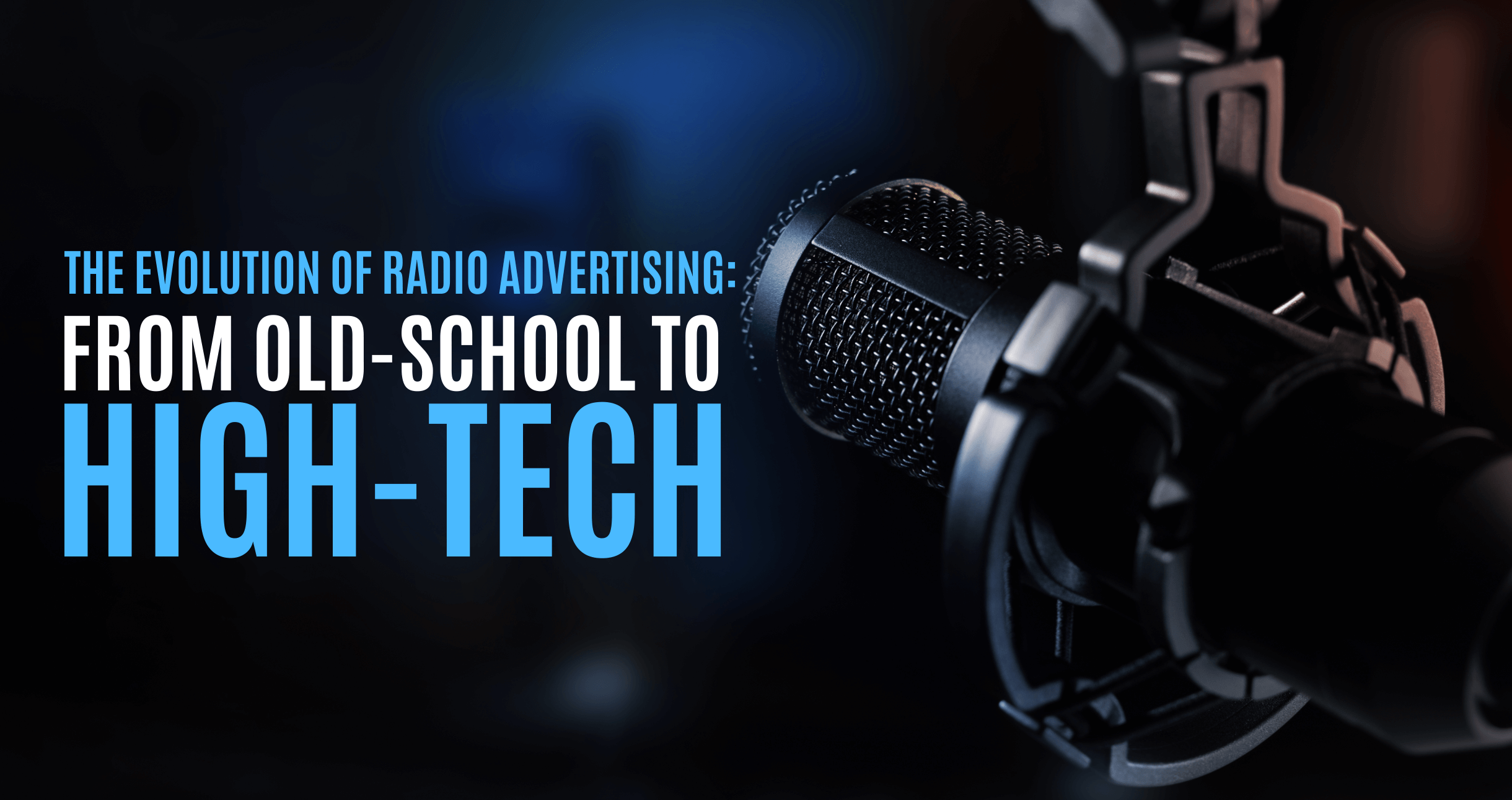From its humble beginnings in the early 20th century to the present day, radio advertising has undergone a remarkable transformation, propelled by advancements in technology, changes in consumer behaviour, and the ever-shifting media landscape. This journey spans decades, encompassing creative milestones, technological leaps, and the seamless integration of traditional and digital mediums. Join us as we delve into the fascinating narrative of how radio advertising has evolved from old-school charm to cutting-edge, high-tech strategies, shaping the way brands connect with their audiences across the airwaves and beyond.
The evolution of radio advertising in India has mirrored global trends, adapting to the country’s unique cultural and technological landscape. Let’s explore each stage with examples relevant to the Indian context:
1. Early Years (1920s-1940s):
Pioneering Days: In India, the first radio station, All India Radio (AIR), began broadcasting in 1927. Early advertisements were rudimentary, with companies like Tata and Lever Brothers sponsoring radio shows to support the fledgling medium.
Live Reads and Jingles: Advertisers embraced the power of live reads and jingles on AIR. Radio hosts seamlessly integrated promotional content and catchy jingles became a staple. For instance, the iconic “Wah Taj!” jingle for Taj Mahal Tea remains etched in Indian radio history.
2. Golden Age (1950s-1960s):
Format Standardization: The 1950s and 1960s saw a structured approach to radio advertising in India. Standard formats emerged, and advertisers, like the famous Amul brand, began crafting witty and memorable radio campaigns that complemented their print ads.
Creativity and Storytelling: The era witnessed the creative zenith of Indian radio advertising. Advertisers focused on storytelling, exemplified by the Amul Topical ads that narrated topical events through clever and humorous radio spots.
4. Transition to FM and Stereo (1970s-1980s):
Improved Sound Quality: The introduction of FM in the 1990s brought improved sound quality to Indian radio. Advertisers capitalized on this, creating more engaging and high-quality ads. The “Har Ek Friend Zaroori Hota Hai” campaign by Airtel exemplifies this era.
Targeted Advertising: With FM stations targeting specific demographics, advertisers like Hutch (now Vodafone) customized their ads to resonate with the urban youth, showcasing the power of targeted advertising.
5. Digital Age (1990s-2000s):
Digital Recording and Editing: The transition to digital technology facilitated easier production and distribution. Brands like Coca-Cola leveraged this by adapting their television campaigns for radio, demonstrating adaptability in the digital age.
Internet Radio and Podcasts: While Internet radio gained popularity, India experienced a surge in podcasts in the 2010s. Advertisers like Swiggy and Unacademy integrated seamlessly into podcast content, reaching a growing audience beyond traditional radio waves.
6. Integration with Online Platforms (2010s):
Social Media Integration: Indian radio stations, like Red FM, seamlessly integrated their on-air content with social media platforms. Hashtag campaigns and online engagement became integral to expanding the reach of radio advertising.
Programmatic Advertising: With the growth of digital platforms, programmatic advertising in India, exemplified by brands like Amazon and Flipkart, allowed for precise targeting and real-time optimization.
7. Podcasting Boom and Streaming Services (2010s-Present):
Podcast Advertising: Indian brands, such as Swiggy and Byju’s, have embraced podcast advertising, recognizing the unique opportunity to connect with engaged audiences through host-read ads and sponsored content.
Streaming Services: The advent of music streaming services like Gaana and Saavn opened new avenues for targeted advertising. Brands like Pepsi and Coke have seamlessly integrated their campaigns into these platforms.
8. AI and Data-driven Advertising (Present and Future):
Personalization and Targeting: Indian advertisers are increasingly using AI for personalization. Services like JioSaavn leverage data analytics to offer personalized ad experiences, ensuring relevant content for diverse audience segments.
Dynamic Ad Insertion: The future holds promise for dynamic ad insertion in real-time, allowing Indian advertisers to tailor ads based on listener demographics, location, and preferences, creating a more personalized and engaging experience.
9. Interactive and Immersive Ads (Future):
Virtual and Augmented Reality: As technology continues to advance, Indian advertisers may explore interactive and immersive radio ads. For instance, gaming companies like MPL (Mobile Premier League) could leverage virtual and augmented reality experiences to enhance engagement with their target audience.
In conclusion, the journey of radio advertising in India reflects a dynamic narrative of adaptation, creativity, and technological advancement. From its nascent days of simple sponsorships to the era of high-tech, data-driven strategies, the evolution of radio advertising has been marked by innovation and responsiveness to the changing media landscape.
The early years saw pioneering efforts by brands like Tata and Lever Brothers, laying the groundwork for a medium that would become an integral part of India’s cultural fabric. As radio matured, the golden age witnessed the emergence of structured formats, memorable jingles, and the iconic Amul Topical ads, showcasing the power of creativity and storytelling.
The transition to FM and stereo broadcasting in the 1990s brought improved sound quality and targeted advertising. With the advent of the digital age, radio advertising seamlessly embraced digital recording, internet radio, and podcasts, expanding its reach beyond traditional airwaves.
The integration with online platforms in the 2010s saw the marriage of radio and social media, with campaigns featuring hashtags and real-time engagement. Programmatic advertising added a layer of precision, allowing advertisers to optimize campaigns based on real-time data. The podcasting boom and the rise of streaming services brought new opportunities for brands like Swiggy, Byju’s, and Gaana to connect with audiences through host-read ads and personalized content.
Looking forward, the integration of AI and data-driven strategies holds immense potential for personalization and dynamic ad insertion, ensuring that messages resonate with diverse audience segments. The future may witness interactive and immersive experiences, with virtual and augmented reality reshaping how brands engage with their listeners.
In this ever-evolving landscape, Indian advertisers continue to demonstrate adaptability and creativity, ensuring that radio advertising remains a relevant and influential medium, capable of capturing the attention and hearts of a diverse and dynamic audience. As technology continues to shape the future, the evolution of radio advertising in India promises to be a compelling story of innovation, connection, and the limitless possibilities of the airwaves.
